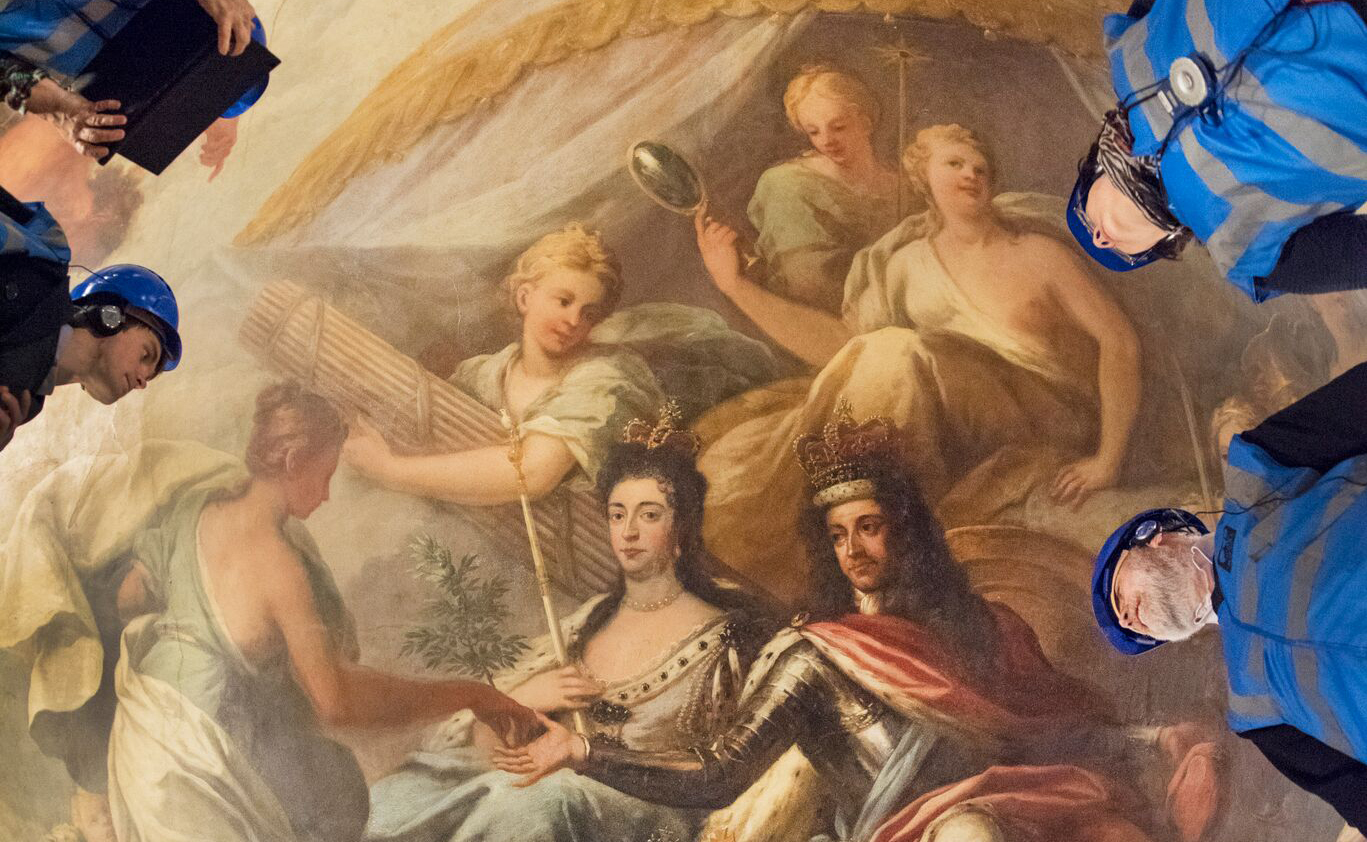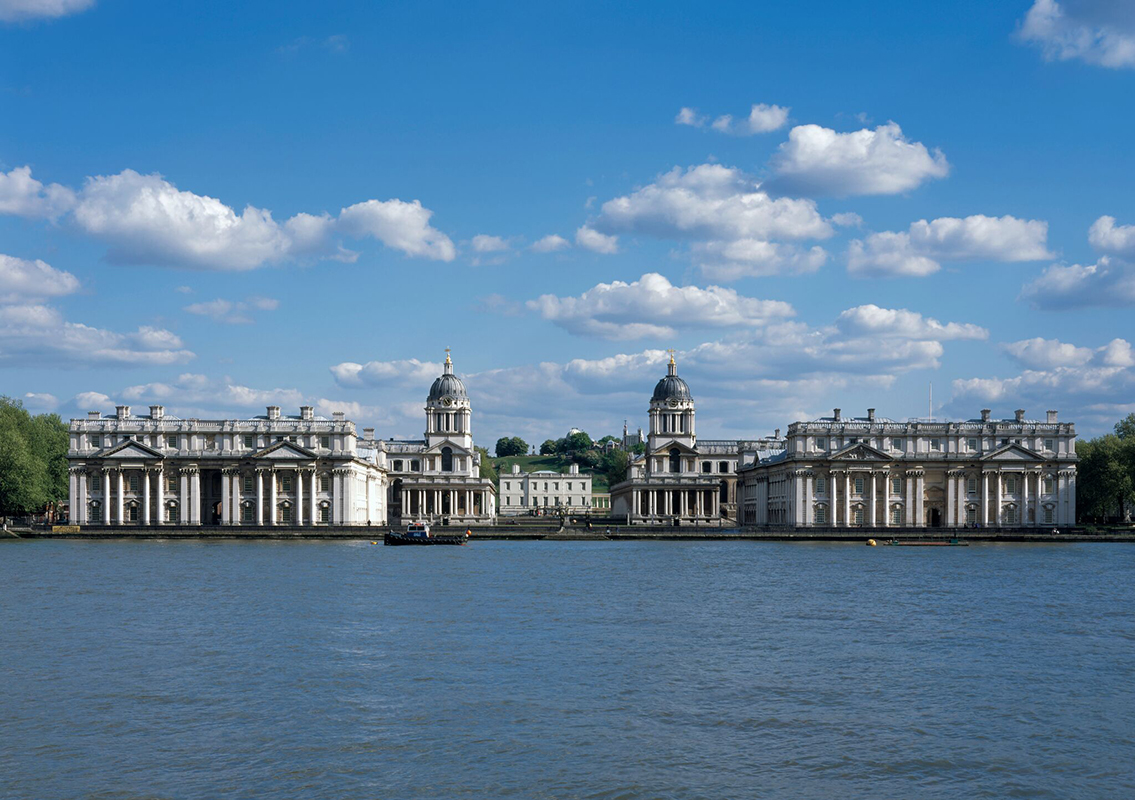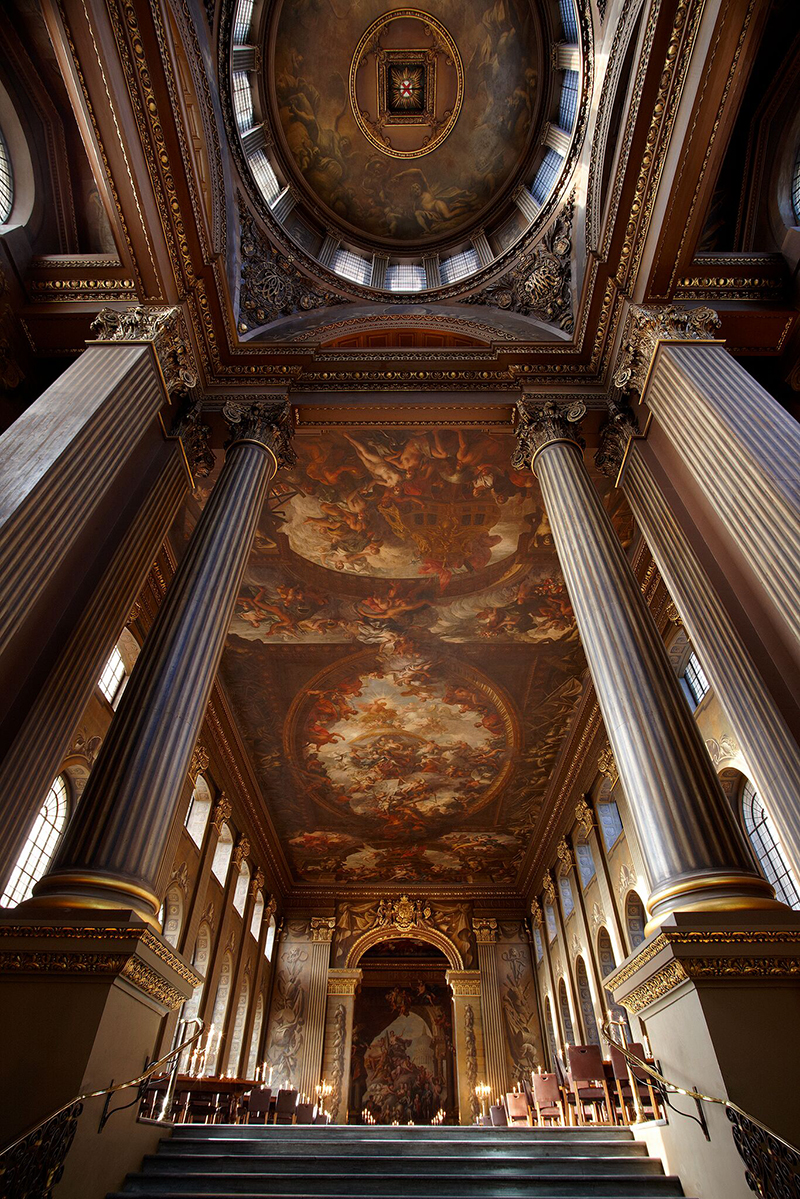This website uses cookies so that we can provide you with the best user experience possible. Cookie information is stored in your browser and performs functions such as recognising you when you return to our website and helping our team to understand which sections of the website you find most interesting and useful.
Conserving a masterpiece: Old Royal Naval College’s William Palin on the challenges of preserving Thornhill’s Painted Hall
By Michelle Johnson | 25 October 2017 | Culture
Conservation director William Palin on the challenges of scale, Sir Christopher Wren and preserving the value of art

Art and architecture are rarely so perfectly intertwined as in Sir Christopher Wren’s famous London buildings – from St Paul’s Cathedral to Kensington Palace – but for architectural historian William Palin there is one building that has somehow escaped the acclaim and importance that it deserves. That building is Greenwich’s Old Royal Naval College, home to the Painted Hall, where Palin is leading a groundbreaking £8.5million conservation project.
”It’s easily one of the most important buildings in Europe,” Palin tells Tempus. As conservation director at the Old Royal Naval College, the restoration of the Painted Hall – where ceilings and walls of the 40,000 sq ft space were painted by British artist Sir James Thornhill between 1707 and 1726 to reflect the pivotal political change occurring at that moment in history with the formation of the United Kingdom – is his biggest challenge to date.
One crucial challenge, aside from the sheer scale of the project, has been Palin’s commitment to include the public in the conservation process by installing an observation deck beneath the ceiling where visitors can see conservators in action – and get up close and personal with the paintings themselves – open now until September 2018.
While Palin will be sharing details of his team’s unique conservation work at the Winter Arts & Antiques Fair, London Olympia, on Friday 3 November, he spoke exclusively to Tempus ahead of the talk to give us the details of conservation, renovation, and how you can unlock the value in your historic portraits…
What can we expect from your talk, ‘Conserving a Masterpiece’, at the Winter Arts & Antiques Fair?
Firstly, the project we’re doing here at the Painted Hall is not very well known, and yet The Old Royal Naval College is easily one of the most important buildings in Europe. The scale and complexity makes it among the most difficult painting conservation projects going on anywhere in the world, so this talk is an opportunity to tell the public about the amazing work our team is doing, but also about this important building and area – which in terms of reverence and tourism really should be on par with St Paul’s Cathedral and other important buildings in London. >>
Related link: Artist Ewan David Eason goes for gold with his new living exhibition at 45 Park Lane

How did the conservation project come about?
The Greenwich Foundation for the Old Royal Naval College is a charity which is custodian to the great baroque buildings here at Greenwich and our remit is to maintain, repair and open the building to the public wherever possible. It’s a rich and complex site. We began looking at the Painted Hall about five years ago, and realised the surfaces required urgent attention to conserve and clean them. We undertook an initial clean of a small area in 2012, and the effects were so transformative in terms of the colour and vibrancy of the work, that it gave the foundation the confidence to take on the much larger project of the rest of the hall. It will cost £8.5m in total, including the building of a new visitor space called The Undercroft. We’re very grateful to the Heritage Lottery Fund for donating £3.4m, and we still have £2m to raise.
What are the challenges of taking on a project of this scale?
There are the physical challenges – just building the scaffolding took four months – but a space of this size requires a whole new way of working in order to get full access to the entirety of the painting. On this scale it really is like a military operation; there’s about 40,000 square feet of painting in the hall so it’s a huge undertaking. Before we could begin the necessary work to conserve the paintings themselves, we also to address some of the underlying problems in the building to make sure the fluctuations of heat and humidity in the hall didn’t further affect the paintings. However this is, of course, a Grade 1 listed monument, so we’re addressing those issues very delicately by introducing very clever new technologies to the hall. Then onto the painting themselves, we have a relatively small team of conservators tasked with the minute cleaning and conservation of every square centimetre of the surface. The other challenges are to do with getting visitors in safely but also in a way that they can interact with our conservators. It’s been difficult, but it’s also all very exciting.
You’re very emphatic about including visitors in the conservation process – how are you going about this?
Ordinarily, we’d have close the hall for 2 years to do the work, but we wanted to bring people on that journey with us. We’ve created a whole observation deck about 7ft below the ceiling, so visitors can come up in a tour group to walk underneath the entire extent of the ceiling. Of course, this allows visitors to experience the full meaning and scope of the paintings, but also to see the process of conservation. We’re also quite open about saying that, by offering ticketed tours, we can fill some of the funding gap from income we’d usually get from weddings and corporate events – so it’s a win-win for everybody. >>
Related link: The Louvre art gallery prepares to put Abu Dhabi in the frame

What are some of the technicalities involved in conservation works like this?
We like to use the terms conversation rather than restoration, because the ethical approach with works of art of this status and importance is that we don’t intervene with the original painting. So we do as much as is necessary – but as little as possible. We do a very careful surface clean with ionised water, we use chemicals which have been well-tested so that we understand their long-term impacts and everything is very gentle. We don’t try to repaint whole areas but might do very careful retouching work in certain areas, but the approach is low key. Fortunately the whole science of conservation has improved greatly in the last 50 years so we understand the chemical properties of these paintings before we even get to the artistic side. Hopefully we’ll enhance the painting, transform them, but not in a way that will physically change them in anyway. The paintings are in pretty good condition – the main problem we have is the varnish that’s been applied to them, which tends to crack and yellow over time.
How important is your historical knowledge when undertaking this kind of project?
Oh, it is very useful. I’m an architectural historian as opposed to an art historian, so funnily enough the work on the paintings is something I’ve had to learn a lot about, but I can bring a lot of contextual understanding because these paintings are part of a building and intertwined with the architecture of Sir Christopher Wren’s amazing structures. If you just took the painting or the building and tried to separate them it wouldn’t work, you have to have a full understanding. And of course, before we could begin with this project we did a huge amount of restoration and repair work to the roofs, so we’re really dealing with the whole fabric of building to make sure the paintings are properly protected.
Obviously this is on a larger scale, but how does conservation affect the value of a piece?
It depends on the condition of the painting and who does the conservation work. There are a lot of qualified and approved oil painting conservators available who can carry out a clean or even a restoration of canvases if that’s required. It’s safe to say that if you’re putting a very valuable painting into auction you’d probably want to have a conservator look at it to tell you what work it might need to tackle any problems that might be there. Conservation has come a long way, and if you have a very yellowed or brown portrait which could benefit ¬– and has enough value to make it worthwhile – then conservation will obviously enhance its value and importance.
The Winter Arts & Antiques Fair Olympia runs from 31 Oct – 5 Nov 2017







